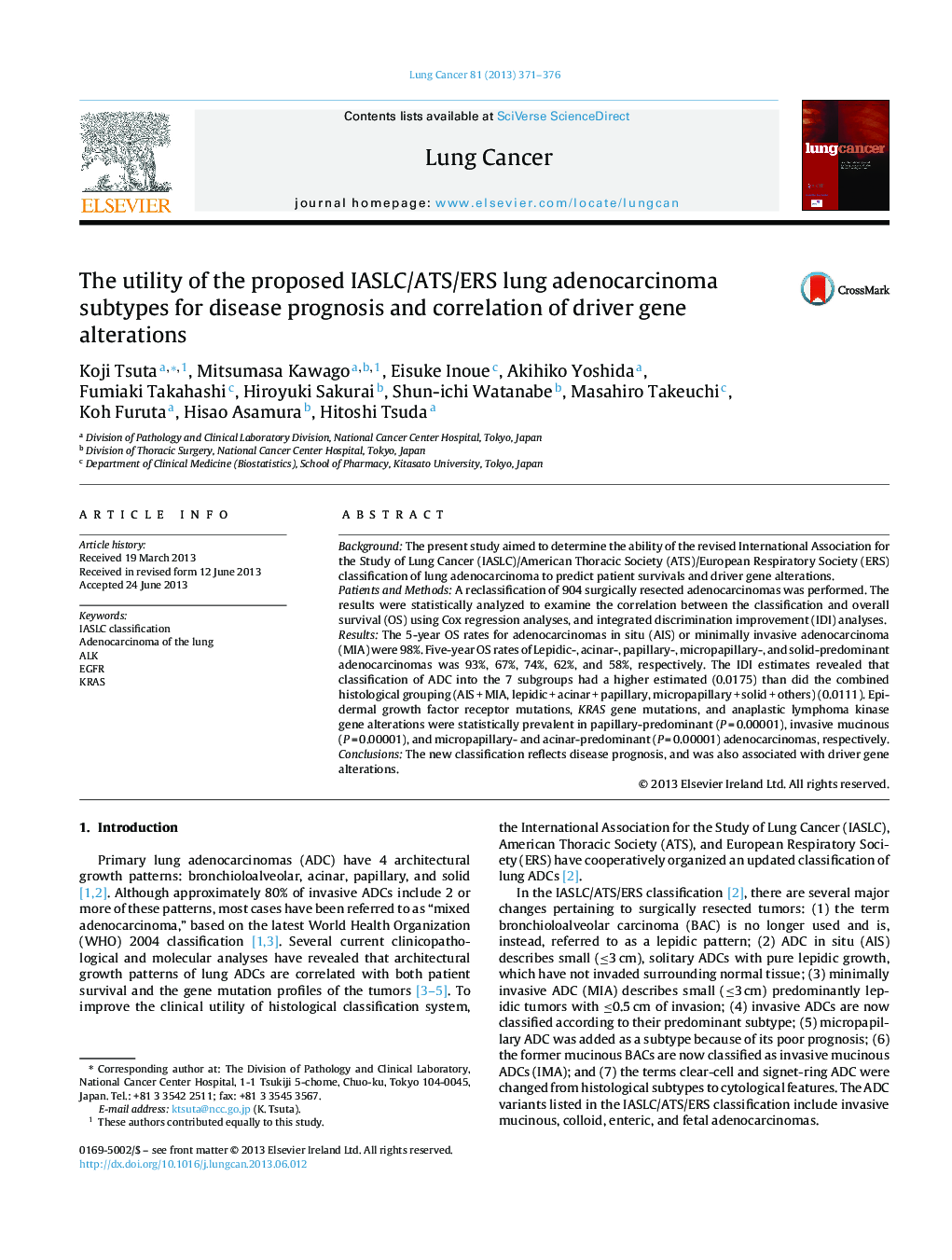| Article ID | Journal | Published Year | Pages | File Type |
|---|---|---|---|---|
| 2141063 | Lung Cancer | 2013 | 6 Pages |
BackgroundThe present study aimed to determine the ability of the revised International Association for the Study of Lung Cancer (IASLC)/American Thoracic Society (ATS)/European Respiratory Society (ERS) classification of lung adenocarcinoma to predict patient survivals and driver gene alterations.Patients and MethodsA reclassification of 904 surgically resected adenocarcinomas was performed. The results were statistically analyzed to examine the correlation between the classification and overall survival (OS) using Cox regression analyses, and integrated discrimination improvement (IDI) analyses.ResultsThe 5-year OS rates for adenocarcinomas in situ (AIS) or minimally invasive adenocarcinoma (MIA) were 98%. Five-year OS rates of Lepidic-, acinar-, papillary-, micropapillary-, and solid-predominant adenocarcinomas was 93%, 67%, 74%, 62%, and 58%, respectively. The IDI estimates revealed that classification of ADC into the 7 subgroups had a higher estimated (0.0175) than did the combined histological grouping (AIS + MIA, lepidic + acinar + papillary, micropapillary + solid + others) (0.0111). Epidermal growth factor receptor mutations, KRAS gene mutations, and anaplastic lymphoma kinase gene alterations were statistically prevalent in papillary-predominant (P = 0.00001), invasive mucinous (P = 0.00001), and micropapillary- and acinar-predominant (P = 0.00001) adenocarcinomas, respectively.ConclusionsThe new classification reflects disease prognosis, and was also associated with driver gene alterations.
